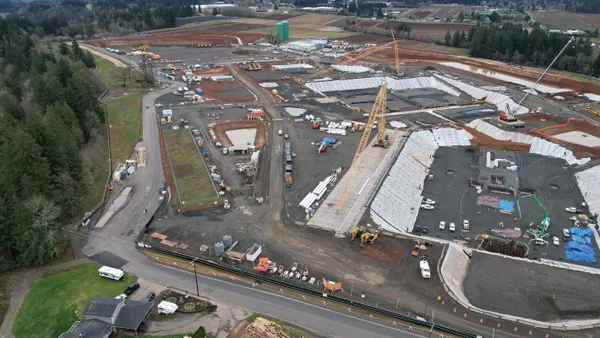Wage theft is more of a problem in construction than any other industry, and groups are trying to do something about it.
The Department of Labor’s Wage and Hour Division recovered over $32.9 million in back wages for over 17,000 construction employees in fiscal year 2022, the most of any industry measured and over $5 million more than the food services industry, the second-highest sector.
In addition, the National Labor Relations Board is close to making key federal labor law tweaks in 2023, Reuters reported. These could include changes to independent contractor classifications to help protect workers from wage theft and other violations.
Sometimes, workers are wrongly classified as contractors even though they meet the criteria of full-time employees. That is a form of wage theft, as they don’t get the pay and benefits they are owed.
Specifically, the NLRB is considering a 2019 ruling, where the board decided a workers’ opportunity for loss or profit and whether they operate an independent business are the two main factors that determine classification.
The NLRB could revert, Reuters reported, to an Obama-era ruling, which said “entrepreneurial opportunity” was just one factor among many to consider when determining classification. Employers have found that rule confusing and unclear, Reuters reported.
A system of subs
In New York, Gov. Kathy Hochul signed a law last month intended to make it harder for contractors with a history of wage theft violations and other labor laws to win public works projects.
“Construction’s subcontracting system can obscure legal and ethical responsibility for the consequences of wage theft,” said Mark Erlich, fellow at Harvard’s Labor and Worklife Program and former executive secretary treasurer of the New England Carpenters Union. “The firms at the top of the food chain often incorporate language in their subcontracts requiring adherence to state and federal laws, thus insulating themselves from legal accountability.”
Contractors pay subcontractors for work, who in turn are obligated to pay their workers. If a subcontractor doesn’t pay a worker and dodges attempts for recovery, the GC is usually shielded from liability, Erlich said.
While the large majority of the country’s general contractors abide by applicable labor laws, experts say that some hire inexpensive subs who skirt paying wages as a part of their business model, leaving workers without fair compensation.
In one recent high-profile case of alleged wage theft, workers are turning to the project owner for payment they say was stolen.
Construction workers building the Tesla “Gigafactory” in Austin, Texas, accused subcontractors of withholding wages, overtime pay and falsifying OSHA records. The Workers Defense Project — which filed complaints with the DOL on behalf of the Texas factory workers in November — is turning to Tesla to secure wages owed to the workers, which it says were unpaid by the subcontractors.
Most of the details were redacted in the Workers Defense Project letters. A spokesperson for the DOL confirmed to Construction Dive that an investigation is open but could not discuss details.
GC liability
Some states, like California and New York, have joint employer liability laws that give workers the right to pursue recourse with the GC when subs don’t pay.
“Basically, it means if a subcontractor doesn’t pay its employees, the employee can look to the general contractor,” said Dan Rosenberg, principal attorney at Chicago-based Much-Shelist.
New York’s law, which took effect a year ago, makes general contractors responsible for ensuring all workers on their projects are paid, including those employed by subcontractors.
Unions have pushed for more of these laws, Erlich said, while employers in his home state of Massachusetts have fought the inclusion of joint employer liability text in wage theft bills.
Employer groups like Associated Builders and Contractors have opposed several aspects of joint employer wage laws, indicating they find them “complex, poorly defined and subject to inconsistent guidance,” according to Ben Brubeck, ABC vice president of regulatory, labor and state affairs.
Brubeck said ABC encourages construction employers to comply with wage laws, but advocated for more “clarity regarding confusing aspects on applicable laws.”
That said, contractors have more tools than ever at their disposal to record data for documenting worker hours and pay.
“There are additional technological solutions that are growing in popularity that are making it easier for all contractors on a jobsite to track workforce hours and assist with certified payroll submissions where required,” Brubeck said.
Still, the issues will likely remain unless a regulatory system change is made. Eliminating the subcontractors that enable these bad practices won’t fix anything, Erlich said.
“Picking off the lower tier subcontractors is a game of whack-a-mole,” he said. “The real culprits avoid punishment and simply continue their business practice with a new set of labor brokers.”























